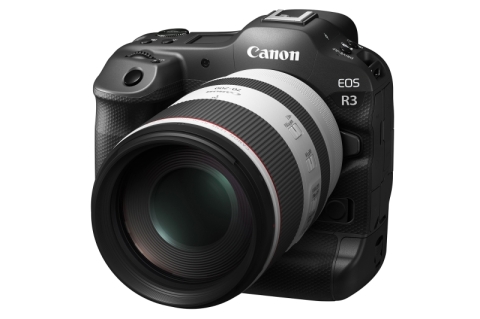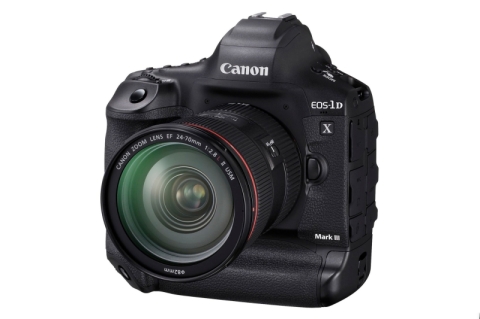Technik
Mirrorless vs Reflex? This is the most frequent question!
Mirrorless vs Reflex?

Mirrorless vs Reflex (Quelle: Roberto Magni and Daniela Comi By Foto ReD Photogr)
GDN -
Mirrorless vs Reflex? This is the most frequent question I am asked during my photography courses.
The world of digital photography has changed radically in the last decade, since mirrorless cameras first entered the market.
The world of digital photography has changed radically in the last decade, since mirrorless cameras first entered the market.
Currently, major brands such as Canon are focusing heavily on mirrorless cameras, which have largely replaced high-end reflex models that have been considered a reference point by professional photographers for years.
Until a few years ago, professionals and amateurs mainly used reflex cameras, while mirrorless cameras were aimed at beginner photographers who were attracted to the completely electronic device, completely detached from old analog film cameras.
This is also because mirrorless cameras were (and are) characterized by reduced weight and dimensions. Over the years, however, the situation has changed radically and many manufacturers have invested heavily in mirrorless cameras, equipping them with their best technologies and offering dedicated high-quality lenses. In contrast, reflex cameras are well established with few innovations overall (except for top-of-the-line models like the Canon EOS-1D X Mark III, which is still one of the best reflex cameras on the market).
Until a few years ago, professionals and amateurs mainly used reflex cameras, while mirrorless cameras were aimed at beginner photographers who were attracted to the completely electronic device, completely detached from old analog film cameras.
This is also because mirrorless cameras were (and are) characterized by reduced weight and dimensions. Over the years, however, the situation has changed radically and many manufacturers have invested heavily in mirrorless cameras, equipping them with their best technologies and offering dedicated high-quality lenses. In contrast, reflex cameras are well established with few innovations overall (except for top-of-the-line models like the Canon EOS-1D X Mark III, which is still one of the best reflex cameras on the market).
The main difference between the cameras in the two categories is in the name: reflex cameras (also known by the acronym DSLR) are models equipped with a flipping mirror and a viewfinder that allows you to optically see what is happening on the other side of the lens, without any filter.
In reflex cameras, the light beam passes through the lens complex and hits a 45-degree tilted mirror, where the light is reflected upwards towards a pentaprism (or penta-mirror, in cheaper models) that directs it to the eyepiece. As soon as you bring your face close to the camera, you can see the exact image through the viewfinder without any digital processing.
Mirrorless cameras, on the other hand, as the name suggests, do not have a mirror, and light, after passing through the optical complex, goes straight to the sensor where it is processed in real-time. At the same time, the image is displayed on the rear LCD monitor or electronic viewfinder (EVF), which is mounted on the top of the camera instead of the classic reflex viewfinder.
When you press the shutter button, the camera records what is present on the sensor at that moment in a simpler and more immediate way than a reflex camera, as there are no mechanical parts and the process is extremely fast.
The abandonment of the traditional mirror on reflex cameras, however, has led to numerous advantages found in mirrorless cameras today. These cameras are based on a simplified design, as mirrorless cameras do not require a complex optical viewfinder or a large mirror to reflect light, and therefore they can have smaller dimensions and significantly lighter weight.
The abandonment of the traditional mirror on reflex cameras, however, has led to numerous advantages found in mirrorless cameras today. These cameras are based on a simplified design, as mirrorless cameras do not require a complex optical viewfinder or a large mirror to reflect light, and therefore they can have smaller dimensions and significantly lighter weight.
Some activities related to the functioning of the camera, such as autofocus, are performed directly on the sensor, leading to very fast readout times that, in some particularly equipped models, allow for ultra-high performance compared to all reflex cameras on the market.
It is a fact that the number of full-frame mirrorless cameras is increasing every year. In the high-end market segment, the difference in image quality between the two categories is practically nonexistent, whether talking about full-frame or smaller formats.
It is a fact that the number of full-frame mirrorless cameras is increasing every year. In the high-end market segment, the difference in image quality between the two categories is practically nonexistent, whether talking about full-frame or smaller formats.
weitere Informationen: https://www.redmagazine.red
Für den Artikel ist der Verfasser verantwortlich, dem auch das Urheberrecht obliegt. Redaktionelle Inhalte von GDN können auf anderen Webseiten zitiert werden, wenn das Zitat maximal 5% des Gesamt-Textes ausmacht, als solches gekennzeichnet ist und die Quelle benannt (verlinkt) wird.






